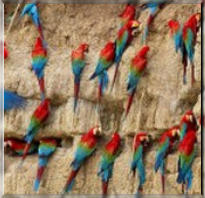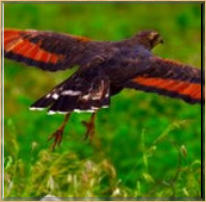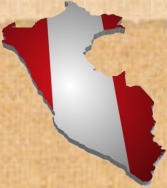
Welcome
Peru’s Travel Website

PERU TOURISM BUREAU
(PTB), is a nongovernment
organization that provides
comprehensive tourism
information and promote
Peru as a leading tourist
destination.
Every place on the planet
has something of interest,
but Perú is undoubtedly a
privileged country for its
great natural, cultural and
human legacy
Useful Links
About Us
PERU TOURISM BUREAU
(PTB), is a nongovernment
organization that provides
comprehensive tourism
information and promote
Peru as a leading tourist
destination.
Every place on the planet
has something of interest,
but Perú is undoubtedly a
privileged country for its
great natural, cultural and
human legacy

FACTS ABOUT BIRDWATCHING IN PERU
Peru has the second highest number of bird species in the
world. Counting only breeding species, Peru ranks first.
More new species were described in Peru in the last 30
years than in any other country in the world, with about 2
new species on average described each year.
The official list of the birds of Peru has increased by about
200 species in the last 30 years, from 1601 species in 1972
to about 1800 species today. A combination of new records
for Peru, taxonomic re-arrangement, and new species for
science are responsible for this.
Right now, descriptions of at least 2 new species are
already in press, at least another 5 new species are being
described, and scientists estimate that more than 30
populations could be new species waiting to be described.
More than 400 of Peru’s birds have more than one
subspecies in the country, adding 1003 subspecies to the
1800 species, for a total of over 2803 taxa
.
Peru has the highest number of “range-restricted”* species
in the Neotropics and is second in the world only to
Indonesia. * defined by Birdlife International as confined to
a range of less than 50,000 square kilometres.
Peru holds the world record for number of bird species
seen in a single day without the help of motorized vehicles,
with 331 birds at Cocha Cashu in southeast Peru. This
record was established by Ted Parker and Scott Robinson
in 1982 and yet to be surpassed.
Tinamous are the most primitive of the Ratites (AN
ANCIENT GROUP CALLED 'PALEOGNATHAE' a group
that includes Ostriches, Rheas,Cassowaries, Emus, Kiwis
and Tinamous, and belongs to the oldest lineage of birds),
and that Peru has more Ratite species (28) than any other
country in the world.
Peru has more flycatchers (family Tyrannidae, 248
species), more ovenbirds (Family Furnariidae, 121 species)
and more finches (Emberizidae, 91 species) than any other
country in the world.
Has both the world’s largest flying bird, the Andean Condor,
and the next-to smallest, the Little Woodstar (only 1 mm
larger than the smallest, the bee hummingbird of Cuba).
For nature lovers from North America, Peru offers by far the
world's most economical, most accessible penguins---the
endangered Humboldt Penguins of the Pacific coast of
Peru, found near the cities of Lima, Pisco, and Arequipa.
Has more macaw clay licks than any other country.
The largest mixed flocks in the rainforest of southeast Peru
gather as many as 103 species, with up to 70 species
present at one time.
These flocks in southeastern Peru are the most complex
multi-species assemblages of any group of organisms in
the world, more so even than coral reef fish.
These mega-flocks, formed by an understory flock, a
canopy flock and a fruiting tree flock, take a long time to
form every morning, so that the best time to see them is
between 11 am and 2:30 pm.
Parrots species take turns w hen visiting a clay lick but that
up to 10 species of parrots can be seen at the same time at
the best clay licks.
The largest numbers of macaws ever seen at clay licks are
at the Tambopata Research Center lick (southeast Peru)
and at the Pucani lick (central-eastern Peru), both in excess
of 300 large macaws at the same time.
Workers in Peruvian coastal islands dug up to 80 metres
(250 feet) deep into guano (bird dung) when they first
started to exploit it as fertilizer in the 1800s.
There are 5 inca-finches belonging to the genus Incaspiza
and that all five are endemic to Peru.
It has been recently discovered that Gray Gulls, a common
gull along the coast of Peru, nests in the desert as far as 60
km inland. Until then, nobody knew where this common bird
made its nests.
At least another 4 species of seabirds (storm-petrels and
terns) also use the desert as a nesting ground in order to
avoid predation














































